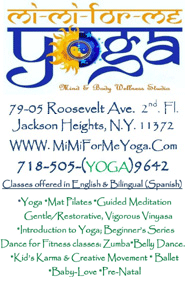|
|
|
|
|
|
Amsterdam is the capital and largest city of the Netherlands, located in the province of North Holland in the west of the country. The city, which had a population of 747,290 on 1 January 2008, comprises the northern part of the Randstad, the 6th-largest metropolitan area in Europe, with a population of around 6.7 million.
Its name is derived from Amstel dam, indicative of the city's origin: a dam on the river Amstel. Founded as a small fishing village in the late 12th century, Amsterdam became one of the most important ports in the world during the Dutch Golden Age, a result of its innovative developments in trade. During this time, the city was the leading centre for finance and diamonds. In the 19th and 20th centuries, the city expanded and many new neighbourhoods and suburbs were formed.
The city is the financial and cultural capital of the Netherlands. Many large Dutch institutions have their headquarters there, and 7 of the worlds top 500 companies, including Philips, Shell and ING are based in the city . The Amsterdam Stock Exchange, part of Euronext, is located in the city centre. Amsterdam's main attractions, including its historic canals, the Rijksmuseum, the Van Gogh Museum, Anne Frank House, its red-light district and its many cannabis coffee shops, draw 4.2 million tourists annually
The earliest recorded usage of the name "Amsterdam" is from a certificate dated 27 October 1275, where the inhabitants of a late 12th century fishing village, who had built a bridge with a dam across the Amstel, were exempted from paying a bridge toll by Count Floris V. The certificate describes the inhabitants as homines manentes apud Amestelledamme (people living near Amestelledamme). By 1327 the name had developed into Aemsterdam. A local romance has the city being founded by two fishermen, who landed on the shores of the Amstel in a small boat with their dog. Amsterdam's founding is relatively recent compared to much older Dutch cities such as Nijmegen, Rotterdam, and Utrecht.
Amsterdam was granted city rights in either 1300 or 1306. From the 14th century on, Amsterdam flourished, largely due to trade with the Hanseatic League. In 1345, an alleged Eucharistic miracle in the Kalverstraat rendered the city an important place of pilgrimage until the alteration to the protestant faith. The Stille Omgang — a silent procession in civil attire — is today a remnant of the rich pilgrimage history.
In the 16th century, the Dutch rebelled against Philip II of Spain and his successors. The main reasons for the uprise were the imposition of new taxes, the tenth penny, and the religious persecution of Protestantism by the Spanish Inquisition. The revolt escalated into the Eighty Years' War, which ultimately led to Dutch independence. Strongly pushed by Dutch Revolt leader William the Silent, the Dutch Republic became known for its relative religious tolerance. Jews from the Iberian Peninsula, Huguenots from France, prosperous merchants and printers from Flanders as well as economic and religious refugees from the Spanish controlled parts of the Low Countries found safety in Amsterdam. The influx of Flemish printers and the city's intellectual tolerance made Amsterdam a centre for the European free press.
During the later part of the 16th century Amsterdam's Rederijkerskamer (Chamber of Rhetoric) organized contests between different Chambers in the reading of poetry and drama. In 1638 Amsterdam got its first theatre. Ballet performances were given in this theatre as early as 1642. In the 18th century French theatre became popular. Opera could be seen in Amsterdam from 1677, first only Italian and French operas, but in the 18th century German operas. In the 19th century popular culture was centred around the Nes area in Amsterdam (mainly vaudeville and music-hall). The metronome, one of the most important advances in European classical music was invented here in 1812 by Dietrich Nikolaus Winkel. At the end of this century the Rijksmuseum and Gemeentelijk Museum were built. In 1888 the Concertgebouworkest was established. With the 20th century came cinema, radio and television. Though the studios are in Hilversum and Aalsmeer, Amsterdam's influence on programming is very strong. Many people who work for television broadcasters live in Amsterdam. Also, the headquarters of SBS 6 are located in Amsterdam.
Amsterdam has a vibrant and diverse nightlife scene and is famous for it. The two main epicentres for nightlife are the Leidseplein and Rembrandtplein. The Rembrantplein is more visited by Dutchmen from outside Amsterdam and the Leidseplein tends to be more for the locals and tourists from outside the country.]
Amsterdam contains a lot of cafes. They range from large cafes, like the ones on the Leidseplein itself to smaller cafes sought after by locals in the smaller streets of this city. Passersby can sit down in an old fashion cafe, which are called a bruine kroeg by Dutchmen. These bruine kroegen contain a pleasant, relaxed atmosphere and the interior is lit with dim lights. Tourists could also choose to sit down in one of the many trendy, stylish new cafes Amsterdam has to offer. These cafes are more sought after by a younger crowd, who drink cocktails or mixed drinks. Most cafes have terraces in summertime. A common sight on the Leidseplein during summer is a square full of terraces packed with people drinking beer or wine.
Many restaurants can be found in Amsterdam. Since Amsterdam is a multicultural city a lot of different ethnic restaurants can be found here. Restaurants range from being rather luxurious and expensive to being normal and affordable. Some of the best restaurants in the Netherlands are located in Amsterdam. Many hotels have an adjacent restaurant.
Amsterdam is the hometown of the Eredivisie football club Ajax. The stadium Amsterdam ArenA is the home of Ajax. It is located in the south-east of the city next to the new Amsterdam Bijlmer ArenA railway station. Before it moved to its current location in 1996, Ajax played their regular matches in De Meer Stadion.
In 1928, Amsterdam hosted the Games of the IXth Olympiad. The Olympic Stadium built for the occasion has been completely restored and is now used for cultural and sporting events, such as the Amsterdam Marathon.
The ice hockey team Amstel Tijgers play in the Jaap Eden ice rink. The team competes in the Dutch ice hockey premier league. Speed skating championships have been held on the 400-metre (1,310 ft) lane of this ice rink. Amsterdam is also a major destination for many skateboard competitions.
The baseball team the Amsterdam Pirates competes in the Dutch Major League. There are three field hockey teams, Amsterdam, Pinoké and Hurley, who play their matches around the Wagener Stadium in the nearby city of Amstelveen. These teams are often referred to as playing in Amsterdam. The basketball team MyGuide Amsterdam competes in the Dutch premier division and play their games in the Sporthallen Zuid, near the Olympic Stadium.
Since 1999 the city of Amsterdam honours the best sportsmen and -women at the Amsterdam Sports Awards. Boxer Raymond Joval and field hockey midfielder Carole Thate were the first to receive the awards in 1999.
|
|
|




|
|
|
|
|